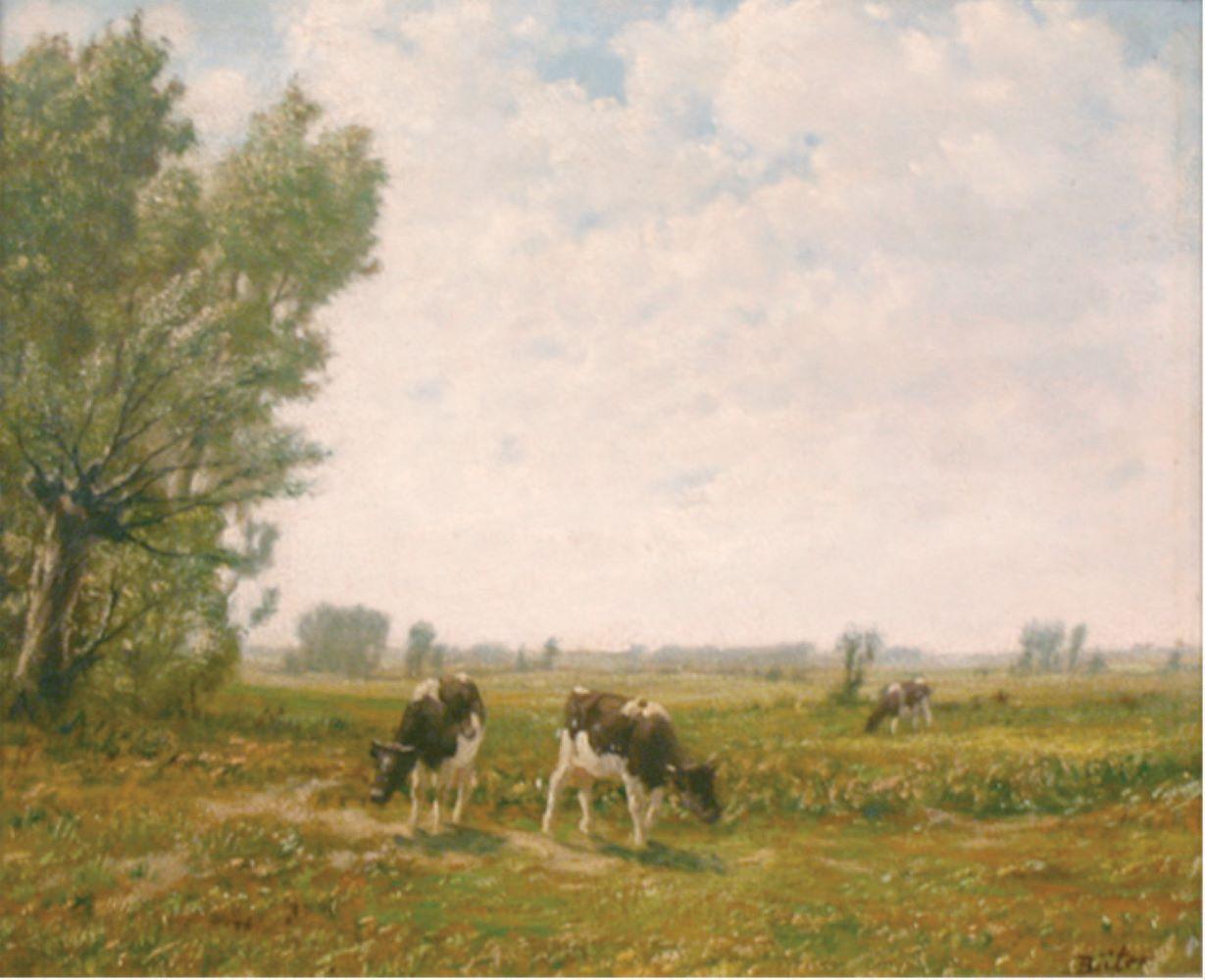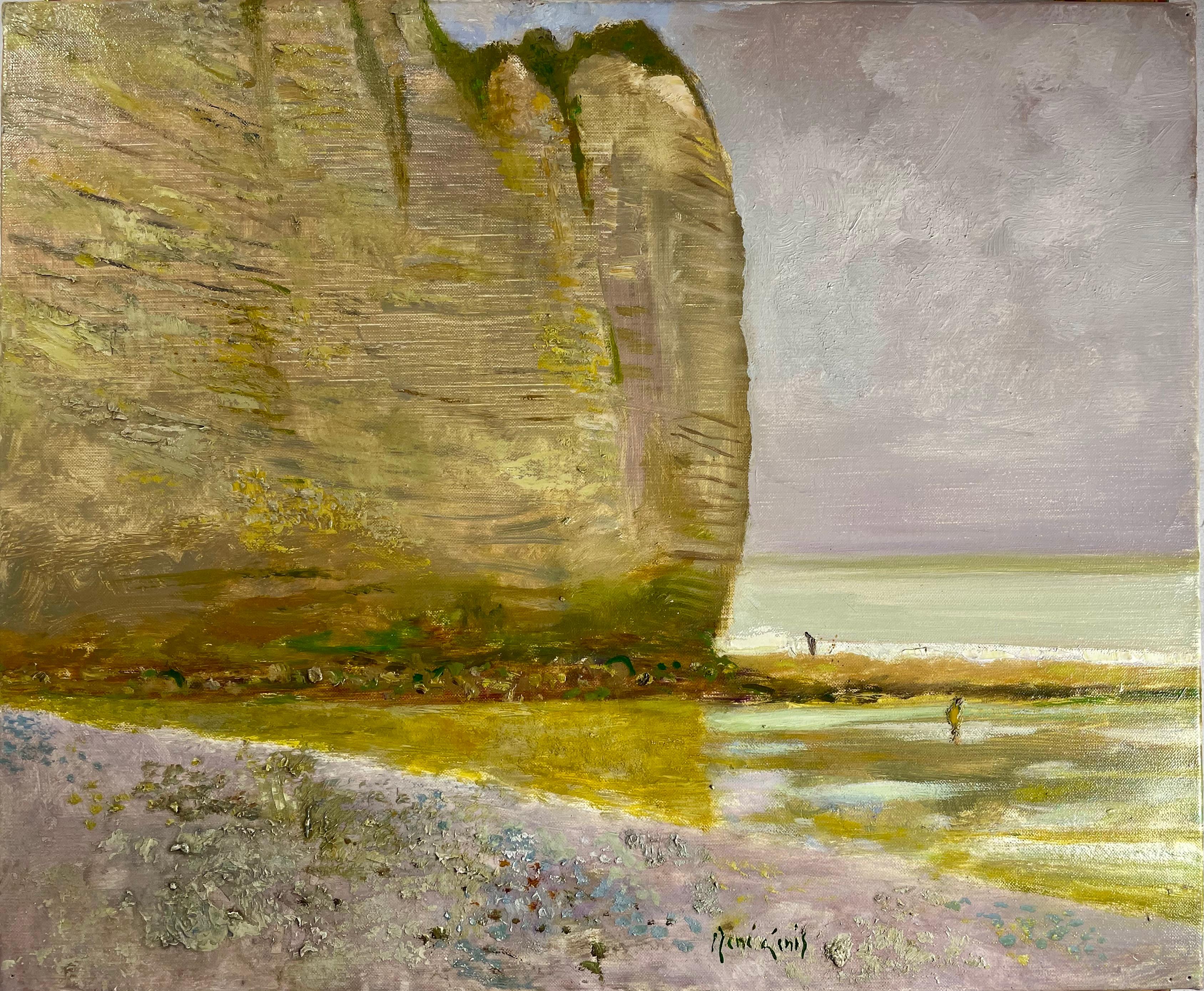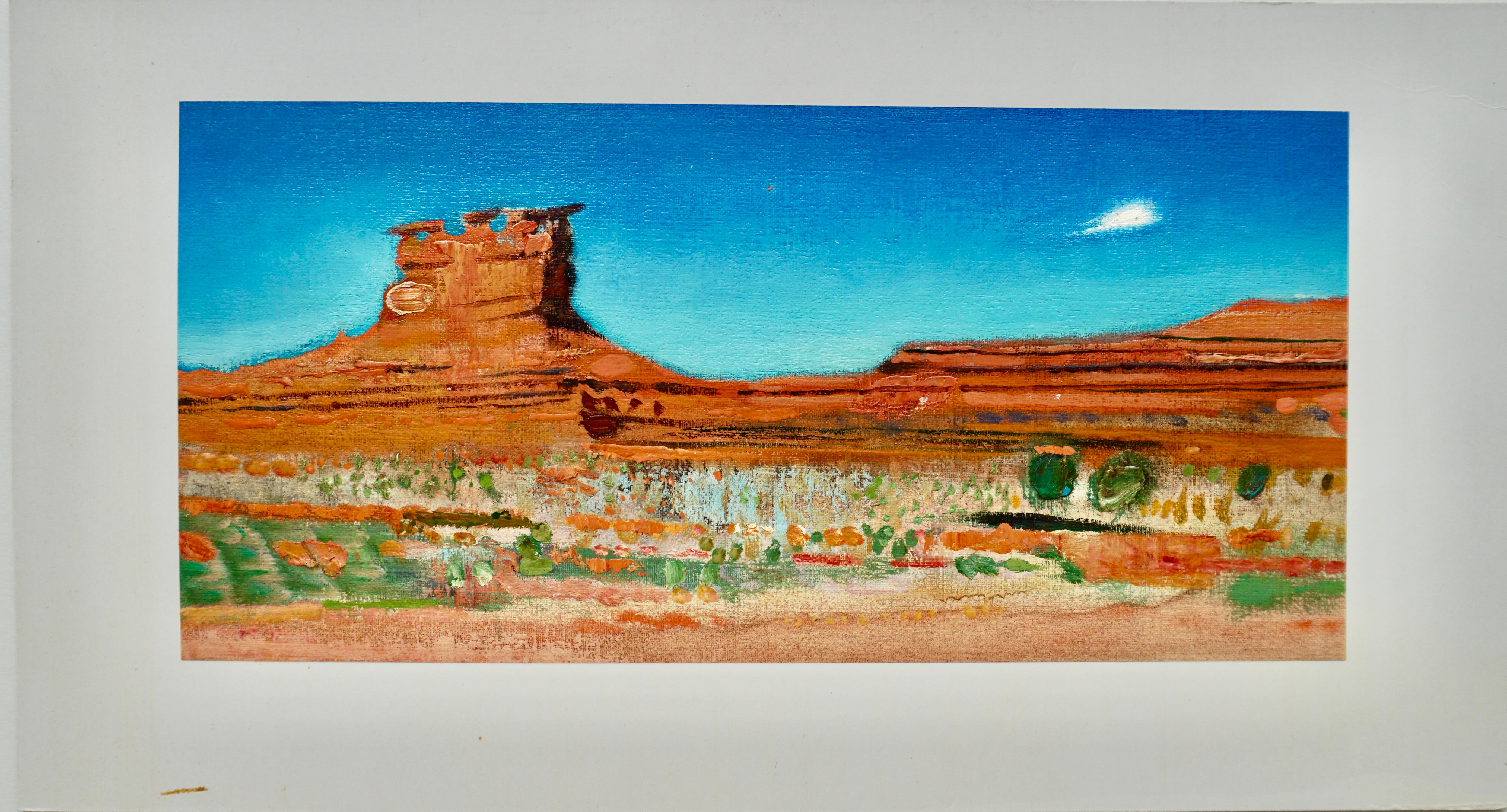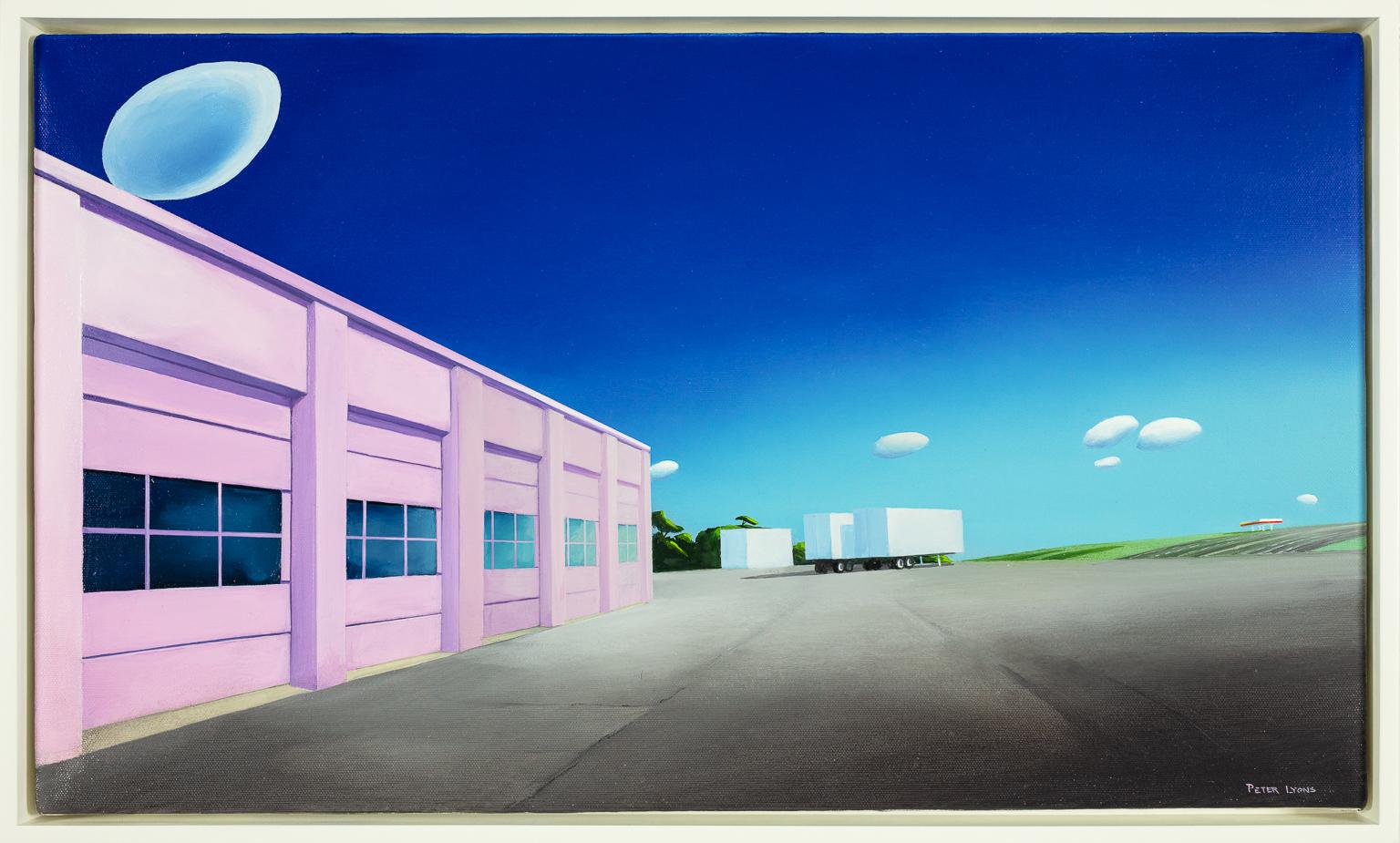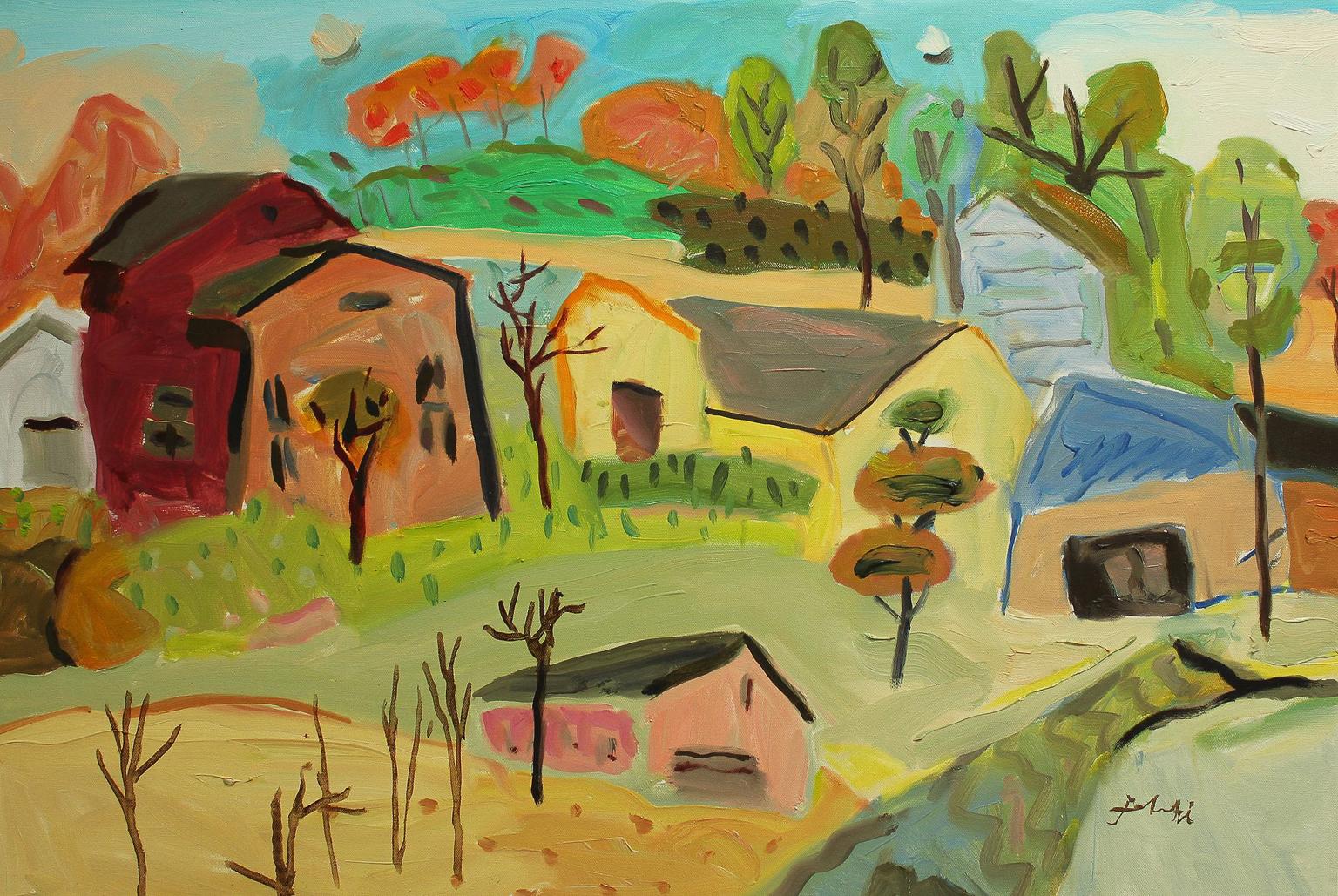Items Similar to Moonlit Seascape, 19th Century by HENRY MOORE (1831-1895)
Want more images or videos?
Request additional images or videos from the seller
1 of 11
Henry MooreMoonlit Seascape, 19th Century by HENRY MOORE (1831-1895)
About the Item
Moonlit Seascape, 19th Century
by HENRY MOORE (1831-1895) to $45,000
19th Century nocturne of a coastal seascape, oil on canvas by Henry Moore. Excellent quality and condition extensive coastal view of a moonlit seascape with a solitary ship in the distance. Excellent quality and condition, signed bottom right and presented in a gilt frame.
Measurements: 18" x 12" framed approx
Artist Biography
Painter, watercolourist, engraver. Fishing scenes, interiors, landscapes with figures, landscapes, seascapes.
Henry Moore was the son and pupil of the portrait painter William Moore and the brother of Albert and Edwin. He went to London in 1853, where he studied at the Royal Academy School, but like his brothers, he found the official teaching hard to tolerate. He exhibited in London from 1853, and went on to feature frequently at the Royal Academy, the Suffolk Street Gallery, the British Institution and the Grosvenor Gallery. He was appointed an associate of the Royal Academy in 1885 and a member in 1892. He was also a member of the Watercolours Society.
Moore began by painting interiors, then travelled, visiting France, Switzerland and Ireland, and around 1870, he adopted the genre in which he was to make his name: painting the sea in all its various aspects and different lights. When a bad storm was forecast, he would sometimes cross England in order to observe it. He is considered to be one of the best British seascape painters.
Museum and Gallery Holdings
Birmingham: By Stress of Weather Driven; Abandoned; On the Moray Firth
Birmingham (Mus. and AG): The Newhaven Packet; Summertime off Cornwall; Rough Weather on the Coast, Cumberland (oil); Near Lossiemouth (oil)
Blackburn (Mus. & AG): Rough Seas in the Mediterranean (oil on canvas)
Bristol: By Stress of Weather Driven; Break in the Clouds
Glasgow: Tidal Wave at St Alban's Head
Harrogate (Mercer AG): Glen Clunie, Braemar Aberdeen (1853, oil on canvas)
Liverpool: Launching a Lifeboat; Seascape
London (Nat. Portrait Gal.): Self-portrait (oil on canvas)
London (Royal Academy): Summer Breeze in the Channel (1893, oil on canvas)
London (Tate Collection): Catspaws off the Land (1885, oil on canvas)
London (Victoria and Albert Mus.): four watercolours
Manchester (City AG): Cattle Fording a Stream (1862, oil on canvas); Arran (Across Kilbrannan Sound) (1894, oil on canvas)
Paris (Mus. d'Orsay): Marine (1887, oil on canvas)
- Creator:Henry Moore (1898 - 1986, British)
- Dimensions:Height: 12 in (30.48 cm)Diameter: 18 in (45.72 cm)
- Medium:
- Period:
- Condition:
- Gallery Location:Blackwater, GB
- Reference Number:
About the Seller
4.8
Platinum Seller
These expertly vetted sellers are 1stDibs' most experienced sellers and are rated highest by our customers.
Established in 2008
1stDibs seller since 2021
193 sales on 1stDibs
Typical response time: 1 hour
- ShippingRetrieving quote...Ships From: Blackwater, United Kingdom
- Return PolicyA return for this item may be initiated within 14 days of delivery.
More From This SellerView All
- View Of An Extensive Landscape, 19th centuryLocated in Blackwater, GBView Of An Extensive Landscape, 19th century by James PEEL (1811-1906) Huge 19th Century extensive English country landscape, oil on canvas by James Peel. Excellent quality and co...Category
19th Century Landscape Paintings
MaterialsCanvas, Oil
- The Battle Of Sluys (1340) - The Hundred Years War (1337-1453)Located in Blackwater, GBThe Battle Of Sluys (1340), oil on canvas Rare account of the opening engagement of The Hundred Years War (1337-1453) Fine huge scene of the Battle Of Sluys between the English and...Category
18th Century Landscape Paintings
MaterialsCanvas, Oil
- Figures & Cattle In A River Landscape, 17th CenturyLocated in Blackwater, GBFigures & Cattle In A River Landscape, 17th Century School of Johann Melchior Roos (1663-1731) Fine large 17th Century German classical landscap...Category
17th Century Landscape Paintings
MaterialsCanvas, Oil
- Dordrecht Moonlit Landscape, 19th CenturyBy Felix KreutzerLocated in Blackwater, GBDordrecht Moonlit Landscape, 19th Century by Felix KREUTZER (1835-1876) Large 19th century Dordrecht moonlit landscape, oil on canvas by Felix Kre...Category
19th Century Landscape Paintings
MaterialsCanvas, Oil
- New Forest Colt Hunting, early 20th centuryLocated in Blackwater, GBNew Forest Colt Hunting, early 20th century circle or Lucy Kemp-Welch (1869-1958) Large early 20th century of Colt Hunting in the New Forest, oil on canv...Category
Early 20th Century Landscape Paintings
MaterialsCanvas, Oil
- Hawk Attacking A Duck, 18th CenturyLocated in Blackwater, GBHawk Attacking A Duck, 17th/18th Century circle of Adriaen DE GRYEFF (1657-1722) Fine huge 17th Century Dutch Old Master scene of a hawk attacking...Category
18th Century Landscape Paintings
MaterialsOil, Canvas
You May Also Like
- Bernhard ButerLocated in Saint Augustine, FLArtist: Bernhard Buter (1883-1959) German Title: Rhinish Landscape Medium: Oil on Canvas Dimensions: Framed 19” x 21” , Unframed 11 x 13” Bernhard Buter paints agrarian landscapes i...Category
Early 20th Century Realist Landscape Paintings
MaterialsCanvas, Oil
- "Les Falaise Normande" (The Cliffs Of Normand)By René GenisLocated in Berlin, MDRene Genis (French 1922-2004) “Les Falaise Normande” / The Cliffs of Normand. A sea scape with high cliffs, the beach, and two fishermen. The cliffs are in browns, tans and olives a...Category
1990s French School Landscape Paintings
MaterialsCanvas, Oil
- "Monument Valley"By René GenisLocated in Berlin, MDRene Genis (French 1922-2004) Monument Valley. 1967. Beautiful oranges, browns, greens against a turquoise blue sky. Oil on canvas, laid on mat. Si...Category
Mid-20th Century Landscape Paintings
MaterialsOil, Canvas
- Early oil depicting the Great Fire of LondonLocated in London, GBThe Great Fire of London in September 1666 was one of the greatest disasters in the city’s history. The City, with its wooden houses crowded together in narrow streets, was a natural fire risk, and predictions that London would burn down became a shocking reality. The fire began in a bakery in Pudding Lane, an area near the Thames teeming with warehouses and shops full of flammable materials, such as timber, oil, coal, pitch and turpentine. Inevitably the fire spread rapidly from this area into the City. Our painting depicts the impact of the fire on those who were caught in it and creates a very dramatic impression of what the fire was like. Closer inspection reveals a scene of chaos and panic with people running out of the gates. It shows Cripplegate in the north of the City, with St Giles without Cripplegate to its left, in flames (on the site of the present day Barbican). The painting probably represents the fire on the night of Tuesday 4 September, when four-fifths of the City was burning at once, including St Paul's Cathedral. Old St Paul’s can be seen to the right of the canvas, the medieval church with its thick stone walls, was considered a place of safety, but the building was covered in wooden scaffolding as it was in the midst of being restored by the then little known architect, Christopher Wren and caught fire. Our painting seems to depict a specific moment on the Tuesday night when the lead on St Paul’s caught fire and, as the diarist John Evelyn described: ‘the stones of Paul’s flew like grenades, the melting lead running down the streets in a stream and the very pavements glowing with the firey redness, so as no horse, nor man, was able to tread on them.’ Although the loss of life was minimal, some accounts record only sixteen perished, the magnitude of the property loss was shocking – some four hundred and thirty acres, about eighty per cent of the City proper was destroyed, including over thirteen thousand houses, eighty-nine churches, and fifty-two Guild Halls. Thousands were homeless and financially ruined. The Great Fire, and the subsequent fire of 1676, which destroyed over six hundred houses south of the Thames, changed the appearance of London forever. The one constructive outcome of the Great Fire was that the plague, which had devastated the population of London since 1665, diminished greatly, due to the mass death of the plague-carrying rats in the blaze. The fire was widely reported in eyewitness accounts, newspapers, letters and diaries. Samuel Pepys recorded climbing the steeple of Barking Church from which he viewed the destroyed City: ‘the saddest sight of desolation that I ever saw.’ There was an official enquiry into the causes of the fire, petitions to the King and Lord Mayor to rebuild, new legislation and building Acts. Naturally, the fire became a dramatic and extremely popular subject for painters and engravers. A group of works relatively closely related to the present picture have been traditionally ascribed to Jan Griffier...Category
17th Century Old Masters Landscape Paintings
MaterialsOil, Canvas
- Autumn Landscape with PurpleBy Zygmund JankowskiLocated in Gloucester, MAZygmund Jankowski (1925–2009) painted traditional subjects with exuberant irreverence for traditional rules of color, composition, and perspective. He disparaged imitation and deligh...Category
1980s Contemporary Landscape Paintings
MaterialsCanvas, Oil
- Flat Ledge Quarry with Golden TreesLocated in Gloucester, MAFlat Ledge Quarry is one of the many granite quarries in Rockport MA, which actively produced granite for cobblestones until the early 20th century, when asphault became the preferre...Category
2010s Contemporary Landscape Paintings
MaterialsCanvas, Oil
